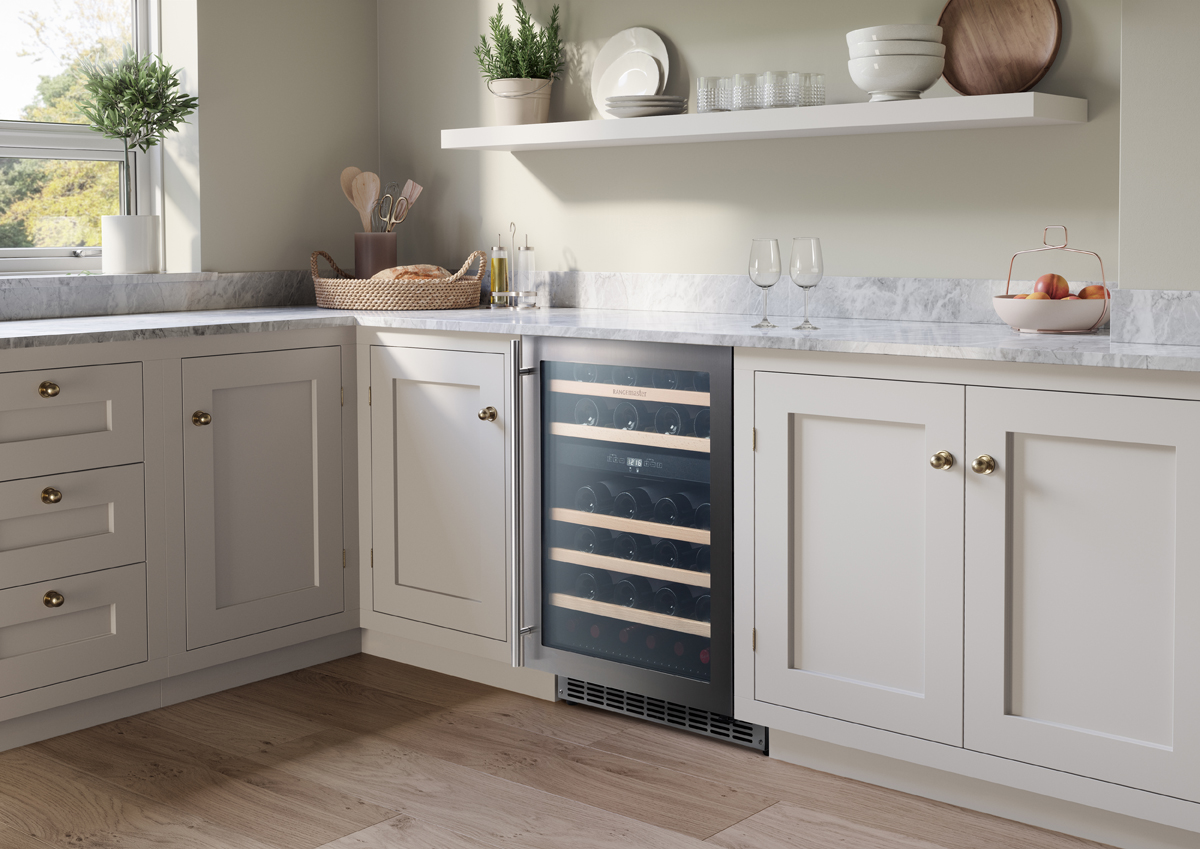
PHPD looks at how builders can incorporate home bar set-ups for more modest kitchens and discovers how wine storage is increasingly popular thanks to the cost-of-living crisis.
At-home entertaining may have accelerated during the pandemic but it is the current cost-of- living crisis which is supporting ‘staying in as the new going out’ trend. House buyers recognise the financial benefits of wining and dining at home and are now seeking kitchens to cater for this. Enter the kitchen with home bar, complete with cocktail bar top, glass rack storage and dedicated wine storage. Gemma Rees, marketing manager of Caple, comments: “The home bar and wine storage market has experienced significant growth over the past couple of years.” However, with Rated People stating in its recent Home Improvement report, the ‘race for space’ was over, does that mean the decline of the at-home bar?
Essential wine storage
Not according to Gemma, who says a home bar can be created to suit a variety of spaces and budgets. However, it must include the essential wine cooler: “Drink set-ups can be anything from a simple bar or wine rack to something as elaborate as an entire room dedicated to a collection. Wine coolers are a perfect addition to any home bar set-up as they offer convenience and style while maintaining an impressive range of temperature control.”
And regional communications brand manager of Liebherr UK Hugo Prado agrees: “You do not need a freestanding drinks unit to create a workable home bar.” He advises: “Why not try smaller in-built units that will hold enough bottles for one night, without overpowering the space. If the fridge has been properly configured and has adjustable storage options, which allow for different bottles to be stored depending on the occasion, a smaller unit can be made to work.”
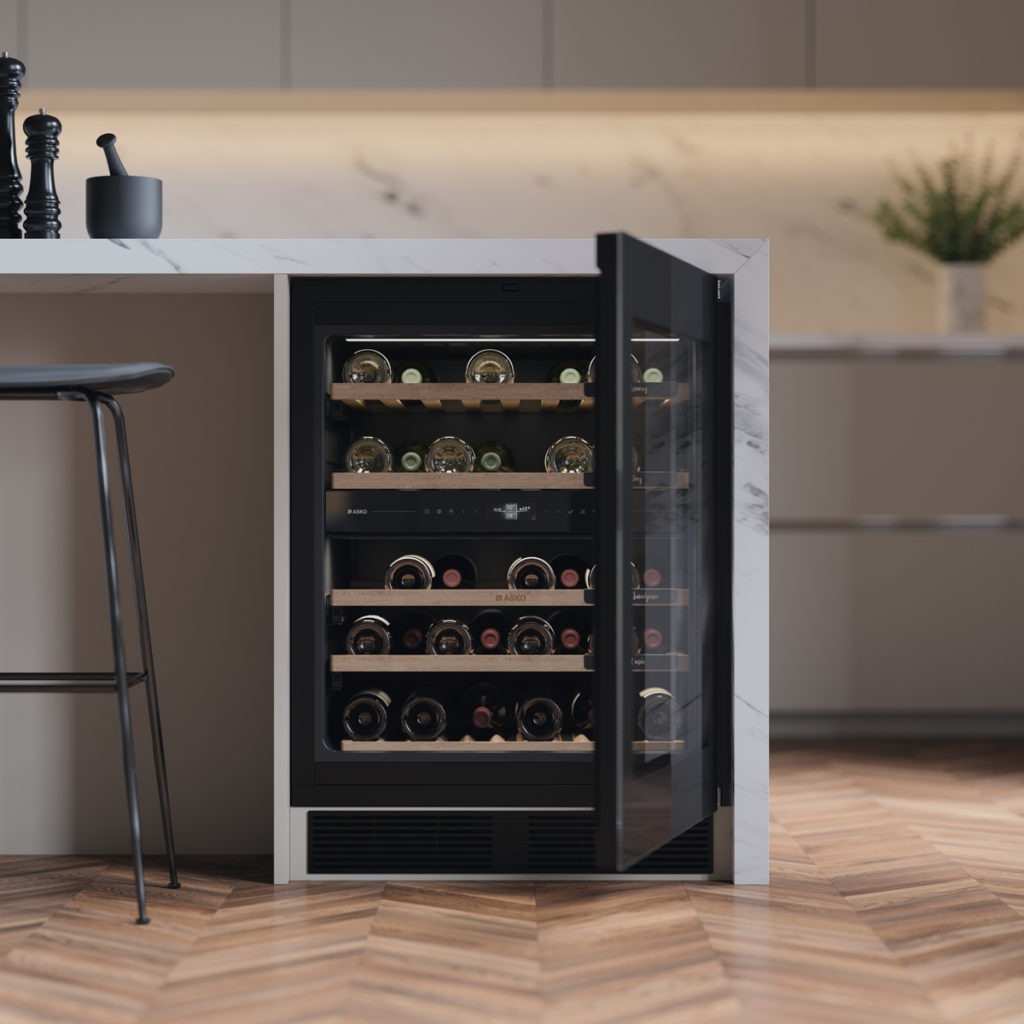
Undercounter rules
There are a wide range of smaller wine storage appliances available to kitchen specifiers, from the single bottle Kaelo through to units measuring from 150mm with a capacity to hold seven bottles up to 600mm for undercounter models. Gemma points out that her company’s most popular wine storage is an undercounter model. While Dunavox marketing manager Jack Healey reports the company boasts “Europe’s largest collection of undercounter wine coolers.”
He states it provides sizes to fit irregular gaps that can be found within kitchen designs, such as 400mm, 500mm and 600mm wide units. Such is the popularity of the undercounter, appliance manufacturer Asko has recently entered the fray with its wine climate cabinet portfolio now including an undercounter wine cooler.
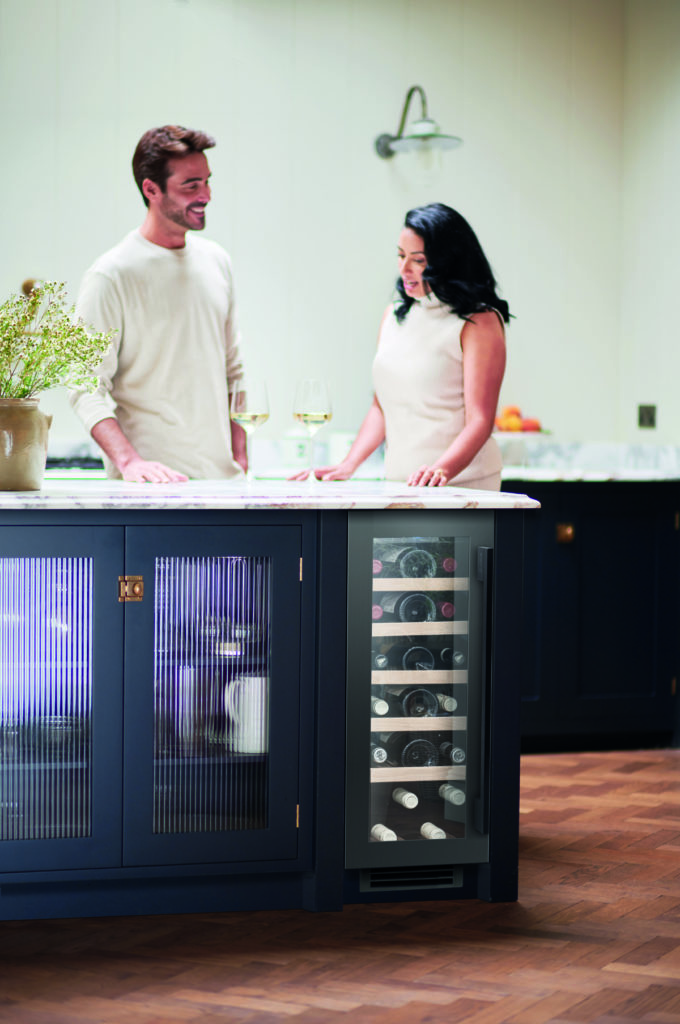
Value in storage
Certainly, there continues to be growing interest in wine storage, as product manager for Prima Appliances at PJH Rob Brookes states: “Sales of wine storage appliances have almost doubled over the past two years, with a 78% rate of growth.”
And the reason for this uplift in sales is that wine fridges not only provide added functionality but add value to the homeowner. Hugo explains: “Wine fridges can add impressive value to a kitchen. It is not just a product people are buying into, it is a lifestyle.
Home entertaining is more important than ever before and kitchens that can accommodate it are essential.” He adds: “The value of a wine fridge cannot be underestimated. Quite simply, wine tastes better when it is stored and served at the right temperature.”
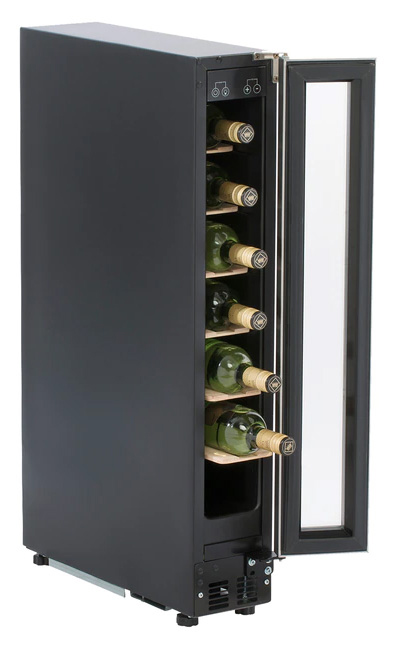
Highlight features
But how can clients be encouraged to trade up in wine storage, for a modest kitchen space, without resorting to increasing the capacity? Jack Healey states buyers must see the benefits, adding: “A dual temperature zone allows them to store a wide range of bottles. A longer-term warranty will give them security when making a larger purchase, alongside an elegant exterior design, that fits with the overall design aesthetic of their kitchen space.”
And Robert Stein, product manager for appliances at Rangemaster, agrees, stating: “The glass door of a wine cabinet should be UV filtered, not only to protect the wine from sunlight but also help maintain a steady internal temperature. Plus, look for models with dual temperature zones.”
And, of course, creating an attractive showroom display is crucial for showcasing products, as business unit head of refrigeration at BSH Valerie Posner adds: “All our models feature LED lighting to beautifully highlight the wine, drawing in potential customers. Once they open the door, they can explore the cabinet’s attractive features such as oak or bamboo shelves, while learning about the benefits of customizable temperature control and UV glass.”
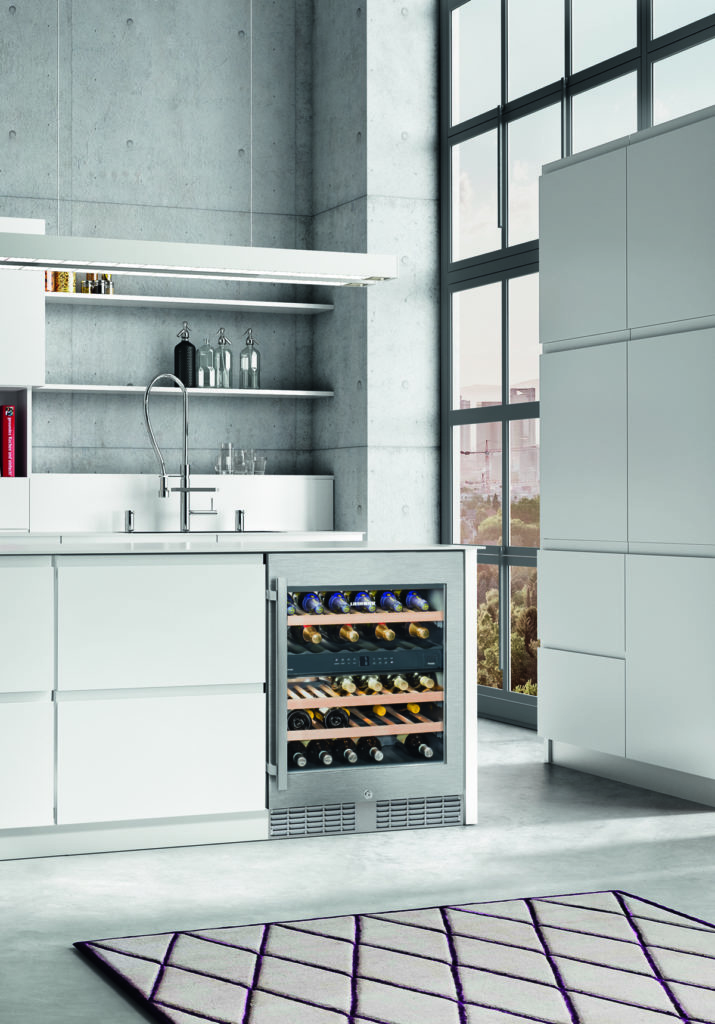
Following hot taps
Despite the toughened economic climate, there is no sign of interest in wine storage abating. In fact, it supports them, as Gemma Rees says: “Home bars are more affordable than night outs, and we expect that preference to continue as people look for ways to save money during these tough times.”
And Simon Plumbridge, Gaggenau category manager, believes they will follow the same path as the instant boiling water tap, becoming a go-to for kitchen projects. He concludes: “The increased interest in wine storage is like the trend with boiling water taps. Just five years’ ago, only luxury kitchens featured boiling water taps. Now, every kitchen from entry level to top- end has a boiling water tap as a standard feature. Wine storage is on a similar path, and we can expect to see continued growth across all levels of the market over the next few years.”
For more information on Asko
For more information on BSH
For more information on Caple
For more information on Dunavox
For more information on Gaggenau
For more information on Liebherr UK
For more information on PJH Prima
For more information on Rangemaster
